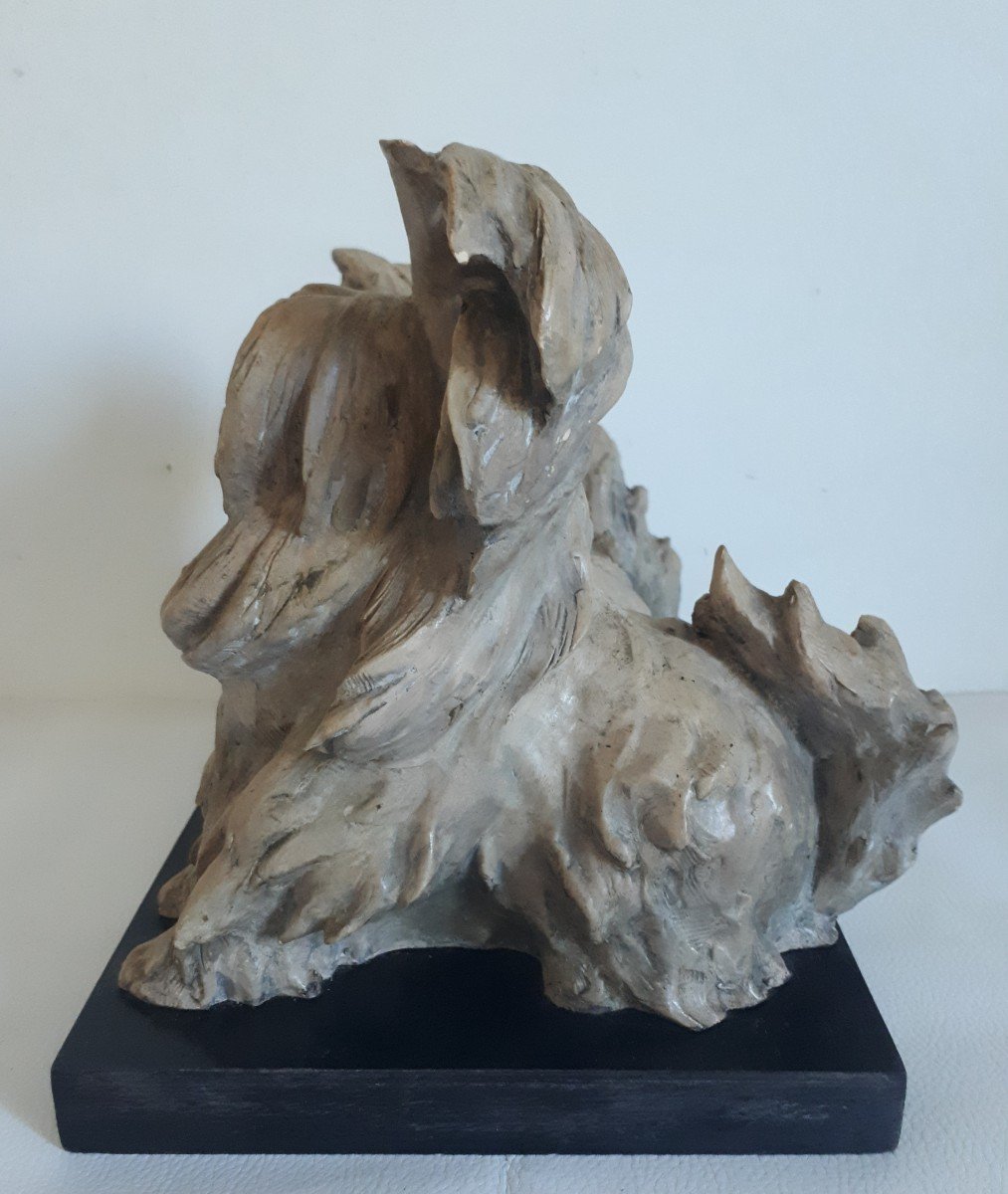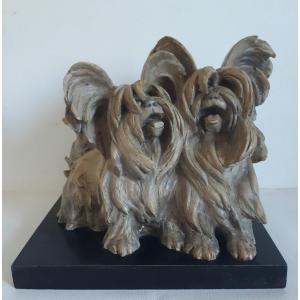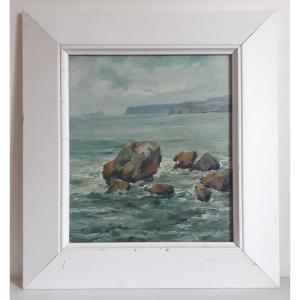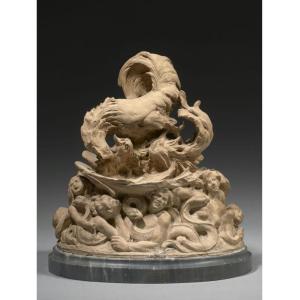Signed G. Cacciapuoti.
Note an accident in the tongue of the dog on the left, which is broken at its end.
Height: 21 cm.
Base dimensions: 23.8 X 18.7 cm.
The artistic ceramic factory "Cacciapuoti" was founded in Naples by Cesare Cacciapuoti, who belonged to a family of majolica makers.
Guido Cacciapuoti, sculptor and ceramist son of Cesare Cacciapuoti, was trained with his brother Mario in his father's factory in Naples. In 1907, he moved to Treviso where he met Gregorj and Arturo Martini. He participated in the 1908-1913 edition of the Trevigiana art exhibition, in 1915 at the Ca 'Pesaro art exhibition in Venice, in 1920 he participated in the Venice Biennale with two sculptures, between 1920 and 1930 he stayed several times in Milan where his brother Mario had founded La Cacciapuoti & C. with other potters. In 1930 Mario died prematurely and in 1931 Guido, Mario Solesin, Angelo Bignami and Rinaldo Righetto transformed the workshop into Cacciapuoti Grès d'Arte. Guido assumes the fundamental role of sculptor and artistic director. In 1953 Guido died and the production continued until 1982 with the heirs.
In Italy, during the first half of the 20th century, the Cacciapuoti factory was one of the main interpreters of animal subjects. The style focuses on simple themes, which combine synthesis, naturalism and precision with a contemplative analysis. Guido's philosophy is expressed in this sentence: "In everyday life, men seek refuge: I have found it in the silence of animals and for that I am committed to expressing it."


















































 Le Magazine de PROANTIC
Le Magazine de PROANTIC TRÉSORS Magazine
TRÉSORS Magazine Rivista Artiquariato
Rivista Artiquariato